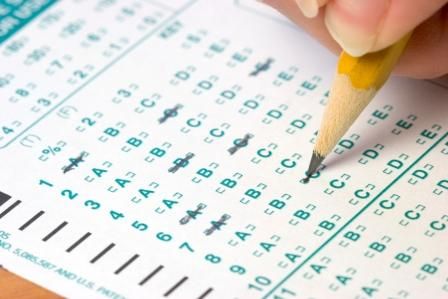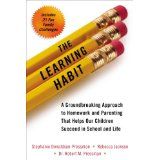
Anxiety
How to Tell if a Child Has Test Anxiety
The solution lies in their taking control of the test.
Posted March 8, 2015

Test anxiety is a bigger problem than many parents and teachers realize. A staggering 16-20% of students have high test anxiety, making this the most frequent academic impairment in our schools today. Another 18% are troubled by moderately-high test anxiety. These students actually draw a "blank" or "freeze-up" during tests. Students with high anxiety perform around 12 percentile points below their low anxiety peers; regardless of how much effort and time they put into studying.
Adults can mistakenly jump to the conclusion that the student didn’t really study, didn’t study efficiently (crammed), or that they were having a bad day. Kids often blame themselves, telling themselves that they just need to try harder or study longer. When students have test anxiety, they can study their heads off and it won’t help—too much studying can actually hinder their performance.
Dr. Robert Pressman, the lead researcher for New England Pediatric Psychology describes test anxiety as having three distinct components: Physiological, behavioral and psychological.
- Behavioral – “going blank” or having disorganized thoughts.
- Psychological – feeling extremely nervous, restlessness, or insecure.
- Physiological –light-headed, faint, nauseous, rapid heartbeat, knot in stomach, headache, tension, sweating.
The solution lies in their taking control of the test, not letting the test control them.
“I always encourage my patients to talk with their teacher in advance of the test and find out the exact format of the test.” Stephanie Donaldson-Pressman told me. She is my co-author on The Learning Habit: A Groundbreaking Approach to Homework and Parenting That Helps Our Children Succeed in School and Life.
Donaldson-Pressman, LICSW, works with both athletes and students who suffer from test and performance anxiety. She frequently works with students as they prepare to take the SAT, and recommends that students seek treatment for test anxiety before talking a “high-stakes test.”
Relaxation is the way this happens: Deep breathing, a cue, and a positive message. In a testing situation, the setup is the most important part. When students are handed the test, the strategy is to first turn the paper(s) over to the blank side, do the cuing action (usually touching the temple), take the deep breaths, and silently say a rehearsed message. Here’s the one I use with my kids: “I know this. I am the boss of this test. I can do this.” Only then should they turn the test over and begin.
As with all testing strategies, children are taught to answer the questions they know first, rather than spend too much time on ones they don’t know; this way they don’t miss the opportunity of getting credit for correct answers because they ran out of time and let anxiety build. When they start to feel anxious, they turn the paper over and repeat the relaxation exercise. It literally takes seconds, but can make all the difference.
Sometimes children are afraid to do this because “it will waste time” on a timed exam. Have them practice it at home; when they are engaged in the process, time them.
Donaldson-Pressman has seen how fast and effective the technique can be with test anxiety. “They will be shocked to discover that the whole process—turning the paper over, cuing, two or three deep breaths, saying the message internally, and turning the paper back over—takes less than 15 seconds!”
This works great with paper and pencil tests, but what about online testing?
The principle is the same; the challenge is greater. Children go through the same cuing, breathing, and empowering self-statement ritual. Often, they are able to employ it when they have gotten an answer wrong or between test sections. If there is no break at all and kids have just two or three minutes to answer each question, they can still use the technique. When they start to feel anxious or overwhelmed, they give themselves permission to close their eyes and take 10 to 15 seconds to do the relaxation exercise before reading the next statement, question, or problem.
They will be better able to use the remaining time than if they had tried to come up with an answer when their brain was unable to fully focus.
TIPS: Preparing for the Test
- Use visual aids to study
- If you are an auditory learner, read passages out loud while studying
- Get the exact format of the test in advance from your teacher. Practice answering questions in that format
- Practice relaxation techniques and use them during the test
- Begin studying at least one week prior
- Exercise the day before
- Arrive on time or early
Copyright © Rebecca Jackson

Learn More About How Students Can Achieve Success in School and Life in Rebecca Jackson's new book, The Learning Habit.
*** The Learning Habit was selected by Parents Magazine as their "MUST READ" parenting book!
References:
George Washington University, University Counseling Center. Test Anxiety. http://gwired.gwu.edu/counsel/index.gw/Site_ID/5176/Page_ID/14095/



